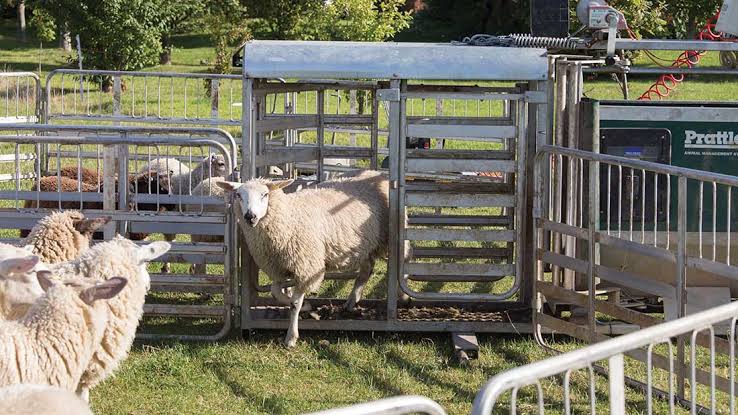

Handling sheep may not come with the safety risk seen with cattle but ensuring systems are set up correctly goes a long way to reducing labour inputs and sheep stress. Handling sheep to carry out tasks such as shearing can be stressful to the animal and cause reproductive issues, reduce immunity to disease and affect output.
Bruising due to man-handling in raceways or sheep making contact with badly designed or maintained systems can cause carcass damage, with economic consequences. Handling takes up a considerable amount of time before any actual procedure is carried out. Good handling systems speed up flock movement and reduce overall handling time.
Poor handling techniques and facilities increase the risk of injury to your workers or yourself, leading to costly absences.
Sheep handling can be tough for the unskilled, but here are some tips to keep both you and your animals safe. Below are some of the ways of properly handling Sheep
Create A Holding Area
When it is time to move, begin by moving sheep into as small a space as possible, for several sheep, a 6-by-6-foot space or smaller is ideal. This way, they can’t work up speed or get away from you, and they’re easier to catch as a result.
Movable livestock panels are very good in this endeavor. If you’re wary of certain sheep, walk toward them while carrying a portable fence panel in front of you. This creates a protective barrier between you and the sheep.
If you can manage, carry two panels folded together flat while hinged or pinned, which can form a corner when unfolded. Try to walk the sheep into an existing corner. When there, add your two fence panels to make a four-walled pen. Keep shrinking the space in which the sheep are caught by moving panels inward.
Catch Sheep Safely
Sheep horns are easy to grab, but it’s not good practice: You can pull the outer covering off of a horn, causing bleeding to occur, or break the horn at its base. If you must grab a horn, don’t pull hard or hold on to it for any longer than necessary. And be sure to wear gloves, as horns can be sharp.
As soon as possible, put one hand beneath the sheep’s jaw. Don’t squeeze; just apply gentle pressure. Sheep want to get away from you, but they don’t want to walk forward into your hand. Instead, they will try to back away. To mitigate this back peddling, use your other hand to press on the sheep’s shoulder or back.
You can also use your knee and a stable fence or wall for additional bracing. With both hands on the sheep as described above, use one knee to press the sheep against a wall or fence, which holds the sheep between your knee and the wall. This helps prevent the sheep’s escape when it attempts to back up.
If your sheep is short enough, you may be able to straddle it after you’ve caught it by the chin, and gently press it between your knees to hold it. Sometimes, this catch is sufficient to administer a quick injection or oral drench or to check its eyes or mouth for problems.
Halter Break Your Sheep
Halter breaking sheep is worth the minimal effort required and is especially helpful if you work with sheep on your own. Later, you’ll be able to walk the sheep on a halter, which is easier on you, and tie the halter to a fence to hold the sheep in standing position for as long as needed.
Place the halter on the sheep. Then either stand near the sheep, holding the halter, or tie the halter leash (without too much loose length) to a fence for about 10 to 15 minutes to start. Early on, the sheep needs to get the feel of the halter and learn not to pull.
Never leave a sheep alone while halter breaking, because it can get caught up in it and choke to death. Be sure to follow instructions and place the halter in the correct way. Do not put the adjustable part around the sheep’s head, as it can become too tight and choke the sheep.
Tipping and Flipping Without Force
Tippling and flipping sheep over for hoof trimming, administering medicine, etc. without hurting it or yourself in the process is a matter of timing and shifting the sheep off balance, not brute force. It takes practice.
Begin in the position noted earlier: sheep chin in one hand, knee against one sheep hip, and free hand on the sheep’s opposite hip. Turn the sheep’s nose toward its rear end, which makes most sheep sit down. Timing is everything: As the sheep begins to sit down, push your knee into its hip to help it lose balance while guiding the sheep over and toward the ground. Do not pull the sheep’s wool.
 Contact Jaguza Support
Contact Jaguza Support